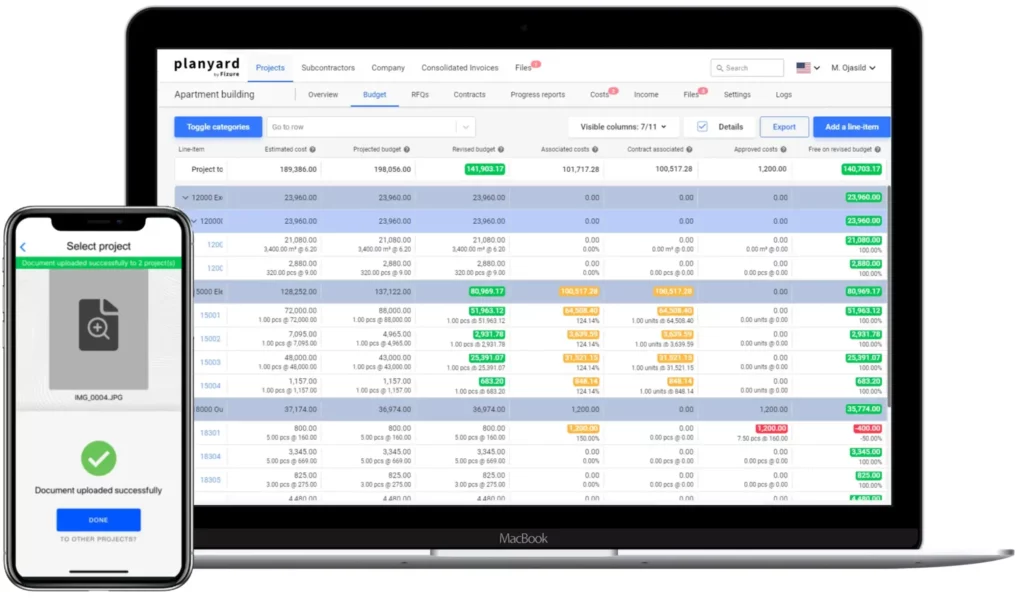Tailored Construction Administration Software: Optimizing Resource Allowance and Budgeting Strategies
In the world of contemporary construction monitoring, the relevance of tailored software program services can not be overemphasized. These sophisticated devices use a nuanced method to maximizing resource appropriation and budgeting strategies, necessary components for effective task execution. By diving right into the complexities of how such software program can enhance resource appropriation techniques and improve budget optimization methods, a clear path towards heightened job performance emerges. In this digital age where accuracy and performance preponderate, exploring the effect of tailored building management software application on these essential elements discovers a world of opportunities that could shape the future of the market.
Advantages of Tailored Software Application Solutions
Customized software application options use a myriad of benefits to building management firms looking for to enhance efficiency and streamline operations. One crucial advantage is the personalization of attributes to straighten with the specific needs of the building and construction sector (construction project management software). By customizing software application options to address job monitoring, organizing, budgeting, and source allowance, firms can optimize their workflows and attain higher efficiency. Furthermore, customized software application enables seamless integration with existing systems, lowering the need for hand-operated data entry and decreasing mistakes.
One more benefit of customized software options is the ability to supply real-time insights and analytics. Building and construction management companies can leverage data-driven decision-making to keep track of task development, recognize traffic jams, and make modifications immediately. This positive technique improves job end results and assists firms remain on track with timelines and spending plans.

Improved Source Allocation Techniques
Carrying out reliable resource allowance approaches is essential for building and construction monitoring firms to enhance job results and maximize efficiency. Improved resource allowance approaches entail strategically assigning personnel, devices, and products to details jobs to ensure ideal use of resources. One crucial facet of boosted source allocation is the capacity to properly forecast job demands and allot sources accordingly. By leveraging construction management software application that uses real-time tracking and reporting features, firms can dynamically adjust allowances as job needs progress, causing enhanced efficiency and cost-effectiveness.
Additionally, enhanced source allowance techniques enable construction companies to determine and address possible traffic jams or resource restraints proactively. By carrying out regular analyses of source usage and efficiency metrics, supervisors can make data-driven choices to redistribute sources effectively and protect against delays. This aggressive approach not just improves task timelines however also decreases the danger of budget overruns because of inefficient source allocation.
Spending Plan Optimization Methods
To attain optimum financial effectiveness in construction jobs, reliable budget plan optimization strategies play an essential duty in making sure price control and job success. One vital method is the facility of a comprehensive task budget that designates sources based on concern and essential demands. By clearly defining the range of work, establishing realistic cost quotes, and continually monitoring costs, building and construction managers can determine possible cost overruns early and take rehabilitative actions. Furthermore, applying value design techniques can aid streamline job costs without compromising high quality. This includes assessing each project component to determine possibilities for price savings while maintaining performance criteria. Leveraging historical data and industry benchmarks enables building supervisors to make educated decisions about spending plan allocations and determine areas where investing can be maximized. By integrating these budget plan optimization methods into construction management software, project stakeholders can enhance economic preparation, source allotment, and overall spending plan monitoring to drive job success and profitability.

Influence On Job Performance
Enhancing australian construction software building and construction management software can dramatically enhance task efficiency by simplifying communication, improving collaboration, and assisting in data-driven decision-making. Additionally, building and construction monitoring software can offer useful understandings through information analytics, permitting job managers to make educated decisions swiftly and properly.
In addition, the automation of regular jobs such as organizing, spending plan monitoring, and source appropriation can maximize useful time for job teams to concentrate on crucial tasks, eventually accelerating job shipment. The ability to keep track of project development in real-time and identify potential traffic jams allows positive problem-solving, stopping problems from intensifying and triggering hold-ups. On the whole, the impact of customized construction management software application on job performance is obvious, providing a competitive advantage by enhancing operations and maximizing productivity.
Future Trends in Building And Construction Software Program
As the building and construction market continues to evolve, advancements in innovation are shaping the future landscape of building and construction software application options. One considerable trend on the perspective is the boosting integration of expert system (AI) and artificial intelligence capabilities in building and construction software application. These innovations have the potential to reinvent how building and construction projects are managed by making it possible for predictive analytics, automated decision-making procedures, and enhanced project insights.
An additional future pattern in building and construction software application is the expanding emphasis on cloud-based options. Cloud technology uses increased versatility, scalability, and access for building and construction groups, permitting real-time collaboration and information sharing throughout project stakeholders. This change towards cloud-based software program is expected to improve task effectiveness, improve interaction, and enhance overall project results.
Additionally, the surge of Structure Info Modeling (BIM) is expected to continue shaping the building software application landscape. BIM software program facilitates 3D modeling, visualization, and data administration, leading to enhanced task coordination, lowered errors, and boosted project end results. Accepting these future trends in building software will certainly be crucial for firms looking to stay competitive and drive development in the market.
Verdict
Finally, customized construction administration software program provides many advantages such as improved resource allotment methods and budget optimization strategies. This software program has a considerable effect on project effectiveness by enhancing processes and improving total efficiency (australian construction software). As modern technology remains to development, future patterns in construction software program are anticipated to more maximize resource allowance and budgeting methods for building and construction projects
Comments on “Evolve Construction: Revolutionizing Project Management in the Market”